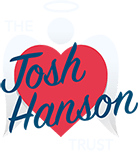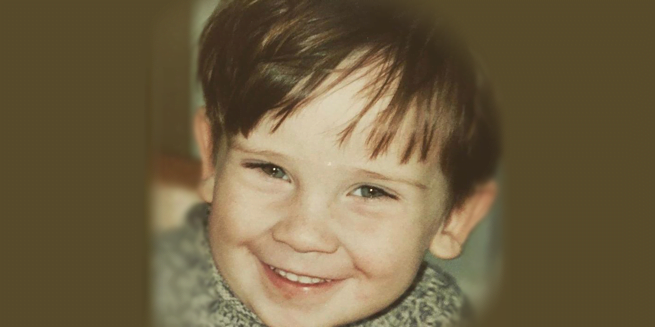Before Josh was murdered and denied his right to life, when he was taken from me and from all those who love him, I never truly understood the profound depth or impact that such an unresolvable and final act had on the secondary victims of crime, and no one more so than that of a mother. This experience can never truly be understood by anyone else unless of course, it has happened to them.
It was far too hard for me to understand or even think about such an experience on a deeper emotional level as it would have felt far too close for comfort. Resonating with a mother displaying such pain would stir emotions and reactions within me which would ultimately leave me thinking that I would not be able to live without one of my children, and so I would quickly push any thought of it away.
The term secondary victim was not one that I was familiar with even though I had witnessed things that had a profound and direct impact on my life before I lost Josh. I first heard the term secondary victim when I experienced the Criminal Justice System, many months after Josh’s murder. A secondary victim of murder is someone who witnesses the event and those who are recognised and accepted as close family members and or loved ones. This also applies to anyone who loved the victim; however, they are not usually offered the same support that immediate family members are given by the agencies involved in their journey throughout the investigation and trial. When a family experiences murder or manslaughter, they all feel pain and trauma at the same time in their own individual right, this causes confusion and sometimes a breakdown within the family unit.
The immense sadness, hopelessness, and panic that I would feel when watching a mother talking about what had happened to their child on TV or what I had read in an article were incomprehensible to me. I would look and read on in horror, not really wanting to because it would have been easier for me to pretend that it had not happened. However, I would keep watching because I wanted to show my respects to her and her child’s memory. As she would plead into the camera asking for information to help catch the perpetrator and get justice for her child. I would watch feeling in some way that I was invading her privacy because it was so raw. However, after her appeal, the focus would be swiftly be brought back to the interviewer and the police. They would give further information about the investigation followed by a few statistics by the presenter, bringing the interview an end. It would be the same watching mothers in worn-torn countries amongst the rubble, as they clutched their dead child screaming and pleading for justice into the camera. The cameraman would then pan away from her tears and pain to the journalist who would then proceed to talk about the cause of such tragedy, the fractious groups fighting each other over their politics and ideologies etc.
Long after watching interviews like this, I would still see the image of the mother’s face and the pain in her eyes, which would stay with me for days, while I imagined what she must be going through. I know what that look is now that is the look of deep emotional profound shock, disbelief, confusion, trauma, and complicated grief, knowing that you will never see your child again. I remember thinking who is supporting her and if she will be ok. All the while reassuring myself that she would have lots of good people around her and the right professional support making sure that her needs were being met.
When I look back, especially on the 11th of every month remember those feelings and never really believing that it would ever happen to Josh. I never thought I would be a mother on the TV pleading to the public for information to catch Josh’s murderer. And that I would also be watched by mothers who were thinking the very same that I had thought. Sadly, I now know the reality of what secondary victims of murder and manslaughter go through. How we are neglected and taken advantage of by a system that does not put victims at the front and centre of the criminal justice system. When I sat behind a TV monitor and pleaded to the public for help, I did this just as the mothers before me did as I was protecting my Son and fighting for his justice. You lack full comprehension because you are in a state of shock. You follow direction because you are desperate while not really understanding what is happening or how it might unfold. You are vulnerable and you put your faith in those around you never thinking that they might let you down. You very quickly realise how little professional support is available to you as you struggle, and much later down the line that it should have been put in place. At the first point of contact with a secondary victim, professional support should be arranged and put in place, not by the family liaison officer, but someone independent, a legal victim’s advocate. Someone who knows what rights you should be given access to and a comprehensive guide that you can refer to every step of the way. Families and friends are often expected to fill that gap, but they too are experiencing traumatic impact while trying to hold it together. And while struggling to cope they might have retreated to try and recover from their loss in their own way. This would also be the very same for those who witnessed the crime, friends, family, and members of the public, community and passers-by alike are left with trauma, shock, disbelief, and confusion. Secondary victims, witnesses, and everyone else who have been profoundly affected have a new DNA a new version of the person that they once were which is now left behind.
The reality is that secondary victims unwilling and unknowingly are being re-traumatised and victimised time and time again. They give their time freely to the agencies involved, as and when it is requested and while they are most vulnerable too. They do this to further support the criminal justice system to help get justice for their child. From the police investigation team, who do not have enough information to arrest someone, to the media outlets, which depending on their editors’ angle will draw attention to the victim and secondary victims or to the perpetrator. These often-challenging experiences leave victims further traumatised, depending on the outcomes. Here in the UK and throughout the world, the focus is on the details of the crime. The who why how what and when not the victim or the secondary victims. All of this is coupled with trying to navigate the criminal justice system, pushing for answers and acknowledgement while being denied a voice. After this, you go home to the place that was once so safe to the reality that it is now filled with empty spaces where memories of love and laughter used to be.
These past four years and 10 months have revealed to me how little attention, care or understanding secondary victims and witnesses of murder and manslaughter receive. The early day trauma followed by re-traumatisation and victimisation continues to affect my life. I like so many others who have been failed by the system feel severely let down. Why and how is it so hard to give victims and secondary victims of crime the right support and why are their rights failing to work and protect them? We need current research and investigation to better understand the impact on secondary victims. This would support the calls for the right support to be given at the right time. More importantly starting from the moment of the event. This approach must involve the victims and witnesses as it is their experience that should be at the forefront of all discussions, and not just by those who have extensive academic knowledge or medical experience alone. I remember when I needed someone to help me to make sense of what was happening to me I was told that trauma therapy is only given to you once you had passed the three month stage, as it would not work. Someone else made that decision for me based on research and in keeping with this advice the organisation who receives millions of pounds every year to care for victims adopted this approach as part of their support service. The lack of available information on hand is further compounded as the police, the NHS, support groups, clinical professionals, and the media who do not have effective guidelines on how to interact, protect and care for victims and witnesses causes re traumatisation. It is one thing to know that you have experienced a trigger and a completely different thing to understand what has caused it and what help you need to work with it.
To all mothers who have travelled the same path as me and those who are yet to do so. I am so sorry if like me you were treated unfairly and in an undignified manner. and still fighting these injustices. I know how you feel, and I know how the system can wear you down. But never be silenced make your voice heard. And to the mothers who may have just been told that your child has lost their life in a criminal act insist that you have the support that you need by getting access to the Code of Practice for Victims of Crime which you can get a copy of on the Ministry of Justice website.
The basic human rights for all victims and secondary victims of crime, are not being met and we continue to suffer because of this every single day. So please become more aware about victims’ rights you do not have to wait to become a victim before you know your entitlements.
In memory of my beautiful Josh ??? #victimsrights #secondaryvictims #justice #4years10months








